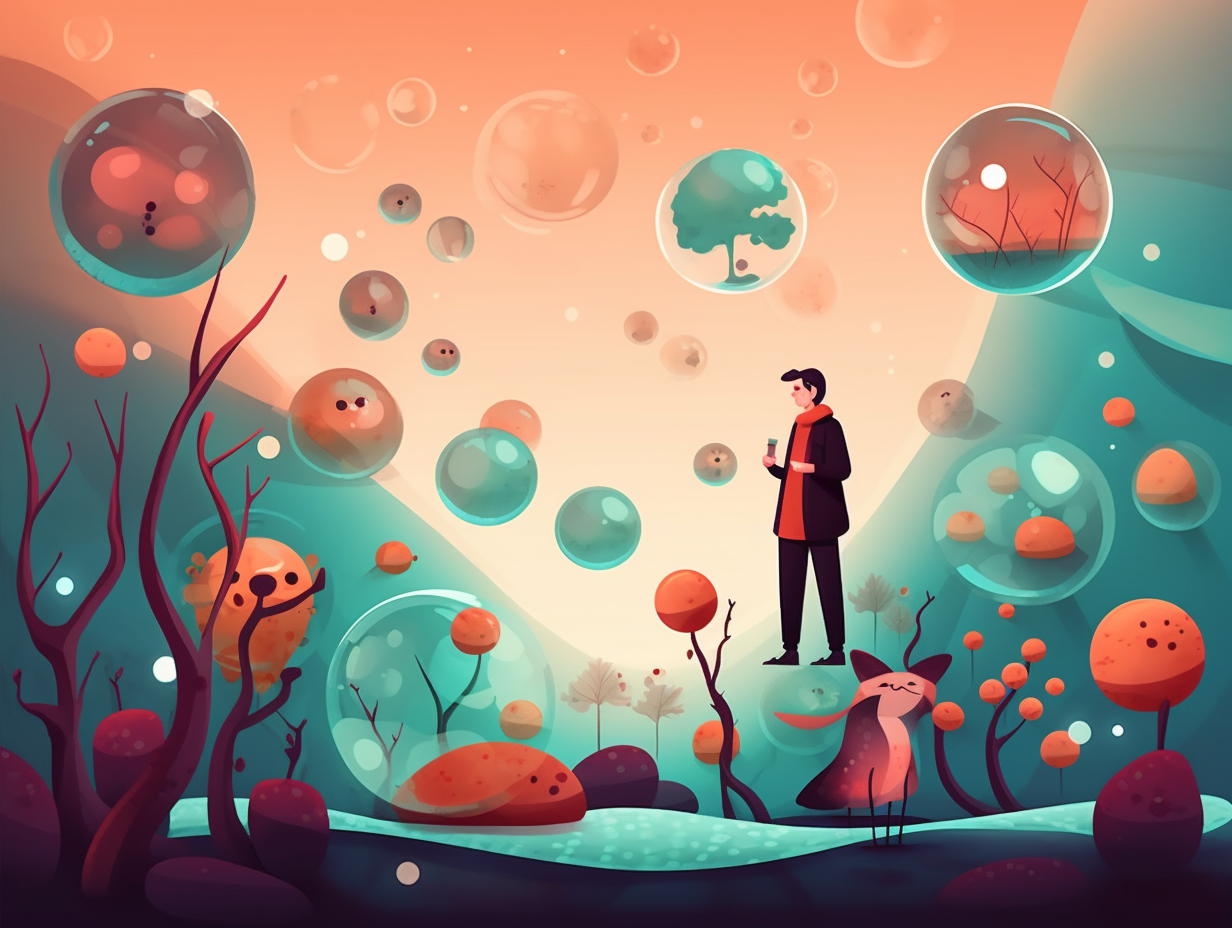Discover the Microscopic World: Top 13 Fun Facts About Cells You Never Knew!

1. Salamander Limb Regeneration
Whoever said, "lend me a hand," must have been chatting with a salamander: These slimy superstars can regenerate lost limbs, organs, and tissues throughout their lives!
Source => ncbi.nlm.nih.gov
2. Cellular Receptors: Grandma's Glasses
Much like your grandma searching for her reading glasses that are, in fact, perched atop her head, cells have a quirky way of "feeling" their surroundings: they're equipped with hundreds of receptor types that specifically detect different molecules and even respond to light or pressure. These clever membranes transform external signals into internal ones, ensuring cells are always in tune with what's happening in their environment.
Source => nature.com

Did you know that animal cells have a hidden "crew" like a cellular pirate ship? Discover the cytoskeleton's vital role in their movement, structure, and division!
=> Fun Facts about Animal-Cells
3. Protein Origami
If proteins were the world's most intricate origami, amino acids would be the skillful hands folding them into shape – and likewise, some of these creations are equally as mischievous as they are marvelous: Cells craft proteins using a unique sequence of 20 different amino acids, which determines the protein's final 3D structure and function through a fascinating folding and bonding process involving primary, secondary, tertiary, and quaternary structures.
Source => nature.com
4. Body Party: 200 Cell Types
Feeling crowded? Perhaps it's just the party happening inside you: The human body comprises a staggering 200 unique types of cells, with an estimated total headcount of 37.2 trillion cells, including a lively mix of human and microbial cells in our gut. They all work diligently, from red blood cells transporting oxygen to neurons managing the chatter, making sure you stay healthy and vibrant!
Source => biologydictionary.net

5. Mitochondria Love Story
Once upon a cellular romance, two microscopic lovebirds decided it was time to take their relationship to the next level, moving in and settling down in the name of energy production: This charming tale recounts the evolution of mitochondria, which actually emerged from endosymbiotic purple non-sulphur bacteria that cozied up with our cells and eventually became an integral organelle, complete with complex protein-import machinery and energy-extracting protein carriers in their inner membranes.
Source => ncbi.nlm.nih.gov
6. Marie Kondo Cells
Cells have a knack for tidying up Marie Kondo style, decluttering their space by breaking down old, damaged bits and turning them into sleek, new components – who knew we could take spring cleaning tips from the microscopic world? The surprising truth: this process, known as autophagy, is crucial for cell survival and overall function, as it recycles broken parts and fights off harmful pathogens like viruses and bacteria.
Source => my.clevelandclinic.org
7. HeLa: A-List Celeb Cells
Roll out the red carpet for the ultimate celebrity cell line, made famous by endless growth and repeat performances in labs: HeLa cells, originating from Henrietta Lacks in 1952, have contributed to over 110,000 scientific publications and countless medical breakthroughs in fields like cancer biology and infectious disease, making them the immortal A-listers of the cellular world.
Source => osp.od.nih.gov
8. Roommate Award: Cell Homeostasis
If cells ran a society, they'd definitely have the best roommates award: they always keep things tidy and well-balanced! Surprise in cell world: cells maintain their own homeostasis to ensure a stable internal environment, relying on various control mechanisms to regulate variables so that nothing goes haywire, leading to possible diseases or cell death.
Source => asbmb.org
9. Eco-friendly Cells
Thought your car engine was fuel efficient? Meet Mother Nature's eco-friendly cellular machines: Cells can actually adjust their nutrient transporters on the surface, allowing them to grow more effectively under different conditions and giving them a leg up in the survival game when resources are scarce. Talk about an energy-saving mode!
Source => ncbi.nlm.nih.gov

10. Integrins: Spider-Man Cells
Step aside, Spider-Man – there's a new sticky superhero in town: Integrins! These cellular dynamos are like miniature Peter Parkers, swinging through the microscopic world on their quest for adhesion. All jokes aside: Integrins are large receptors found on cell surfaces that bind to various ligands on other cells and in the extracellular matrix, playing critical roles in immune cell functions and morphing from closed to open conformations for optimal cell interaction.
Source => frontiersin.org
11. Nrf2: Superhero or Double Agent?
Cells are like that friend who suddenly becomes a gym rat, starts devouring kale salads, and acquires an uncanny ability to withstand a relentless barrage of stress - all thanks to the marvelous Nrf2 signaling pathway: This cellular protein acts like a superhero, boosting the cell's resistance against damage from oxidative stress. But beware, in some villainous cancer cells, this mighty protector morphs into a double agent, enhancing tumor progression and leaving patients in dire straits. And that's why Nrf2 is now in the crosshairs of cancer therapy researchers!
Source => ncbi.nlm.nih.gov
12. Chloroplasts: Green Superstars
Can you believe chloroplasts are the true green behind the plant scene, but they don't even wear shades to protect themselves from the sun's glare? Talk about embracing the spotlight! Seriously though: Chlorophyll, the green pigment in plants, is found in the chloroplasts of plant cells and is responsible for absorbing light energy that's used to create glucose during photosynthesis, no sunglasses required.
Source => education.nationalgeographic.org
13. Protein Therapy: Chaperoning Identity Crises
Why did the protein go to therapy? Because it was having an identity crisis and needed molecular chaperones to guide it back to its true self: These cellular helpers, such as heat shock proteins HSP60, HSP70, HSP90, and HSP100, expertly fold, unfold, and disassemble diverse proteins, preventing aggregation and ensuring that proteins function correctly and efficiently, thereby supporting the overall health of the cell and contributing to an organism's longevity.
Source => ncbi.nlm.nih.gov
Related Fun Facts




















